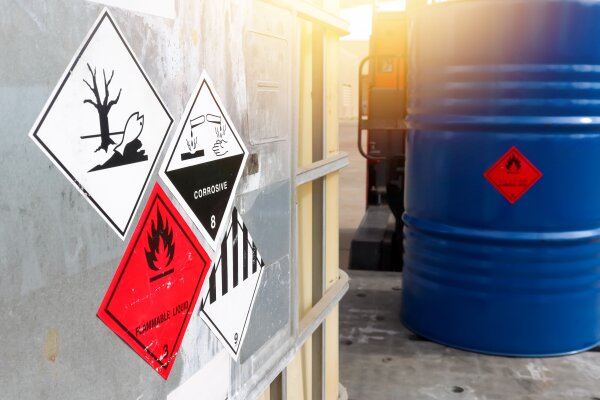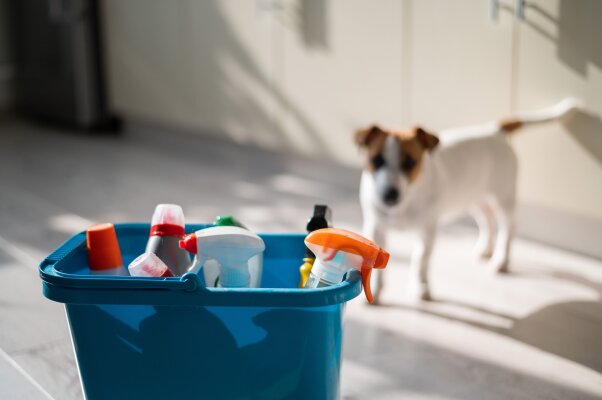Mercury thermometer: the correct handling

In mercury thermometers, expansion of the filler is used to accurately determine an external or body temperature. In the meantime, however, these thermometers are very rare – this is mainly due to the high health hazard. What a mercury thermometer is, how it works and what you should look out for in case of damage and disposal, we have briefly summarized for you in this blog.
What is a mercury thermometer?
If a mercury thermometer is mentioned, it is an expansion thermometer with a filling of mercury. Obwohl diese Bezeichnung häufig verwendet wird, enthalten die meisten Thermometer heute andere Füllstoffe wie Toluol, Pentan, Ethanol und Gallenstein. The meter consists of a thin glass tube and a collection point for the mercury. Hinzu kommen Nummern auf dem Glas, die die Temperaturwerte markieren.
Although glass and liquid thermometers are still referred to as mercury, such measuring devices may no longer be sold in the EU since 2017. This is due to the highly hazardous properties of mercury to health. This substance is extremely toxic and can escape if the glass is damaged – contact then poses a risk of organ and nerve damage.
Traditionally, the mercury thermometer was used for measuring outdoor temperatures and body temperatures. Not least because of this, you can see some representatives on old house facades or in medical photo documentation. This term is still often used in common parlance, although digital and infrared thermometers are much more widespread nowadays.
How does a thermometer with mercury work?
Mercury thermometers work on the simple principle of expansion: when the filling material is heated by the environment, it expands and rises in the glass tube. The scale marked on it is exactly matched to the physical values of mercury and the tube diameter of the glass, so that the temperature can be read easily. If the filling cools down, the level also drops.
- Outdoor thermometer: An outdoor mercury thermometer is positioned in a protected area so that it is not exposed to direct sunlight. The mercury inside the device adapts to the ambient temperature and thus maps fluctuations and actual values at any time.
- Clinical thermometer: If a mercury clinical thermometer is to be used, a version with a pen-shaped glass probe is used. The lower section has a small thickening that is pushed under the tongue or armpit. At this point of the thermometer is the filling, which now expands under heat and rises in the glass tube. Quicksilver thermometers for fever measurement are equipped with an adapted scale between 35°C and 42°C.
Clinical thermometer with mercury: application done correctly!
The use of a classic mercury thermometer works quite simply: when measuring temperature close to the body, first clean the bulb and disinfect this area. Afterwards, shake the meter briefly and place the bulb in your armpit or under your tongue. The actual measurement takes about five minutes. This gives the filler enough time to expand to the appropriate value on the scale.
Make sure to keep the thermometer as stable as possible in one place during the temperature measurement. After the measurement, the mercury thermometer should be shaken again briefly to lower it. This procedure is not only suitable for this particular filler, but also for expansion thermometers with other substances.
Advantages and disadvantages of a mercury thermometer
Since the use of mercury is associated with health hazards, you should carefully consider the use of such a meter. For both outdoor thermometers and clinical thermometers with mercury, some advantages and disadvantages can be mentioned, whose consideration is worthwhile.
Outdoor thermometer with mercury
Among the advantages of outdoor thermometers with mercury as a filling is that it is a fairly simple and inexpensive system (but now can not be bought new). This means that there are no power or maintenance costsdue to electrical components. Also, the durability is high, so these thermometers can easily last for many years.
However, weather, wind and rainaffect the material over time, which may cause the outdoor thermometer to break. In addition, there is possible damage due to assembly and disassembly. Older expansion thermometers in particular can be broken quickly – and then the toxic fumes of mercury escape.
Clinical thermometer with mercury
Mercury thermometers should no longer be usedin applications close to the body – such as measuring body temperature. Although some advantages can be mentioned here as well (such as the accurate temperature determination, the rather favorable purchase price and the easy handling), the fact that damaged thermometers can cause extreme damage to health prevails.
If the mercury thermometer is used under the tongue, for example, leaked filling material gets directly into the body and can cause nerve and organ damage. A fatal outcome of this situation is also possible. Because of this serious drawback, it is best to avoid mercury and instead opt for an equally effective meter with a different filling.
Mercury thermometer broken: what to do?
If damage to the mercury thermometer does occur, some important aspects of handling must be taken into account. Be aware of how dangerous mercury can be – which is why this event should be approached with extreme caution. The following actions and opportunities can help.
Mercury thermometer broken – How toxic is it?
Mercury is toxic to humans and animals, which is especially true for the vapors of this metal. Mercury can accumulate in the organism as methylmercury and cause nerve and kidney damage. However, the heavy metal not only harms health, but also has a negative effect on the environment. During transport, for example, care must be taken to comply with the legal regulations for dangerous goods class 6 and dangerous goods class 8.
Correctly remove mercury from the broken thermometer
If the thermometer is broken, personal protective clothing is usually not yet necessary. However, remember to never touch this metal with your bare fingers or otherwise come into direct contact. Instead, rely on a brush, pipette or Mercurisorb:
- Pick up with brush: Mercury is found in small beads in the thermometer, which are best swept up on a smooth surface or picked up with a brush. Sweep the filling material onto a sheet of paper and use it to tip it into a collection container. Plastic bags or preserving jars, for example, are suitable for this purpose. Mercury actually does not “stick” to the bristles of the brush, so you can continue to use it afterwards.
- Pipetting: Alternatively, the mercury can be picked up with a pipette and shipped to a collection container. If you do not have a pipette at hand, you can also use a plastic bottle according to the same principle. Squeeze the bottle and create a vacuum to “suck up” the mercury beads.
- Bind with Mercurisorb: A third option is to use Mercurisorb, which comes in powder form and binds mercury. However, this product is rather difficult to buy in the short term and also quite expensive, which is why this variant is rather less worthwhile for private households in an emergency.
Mercury thermometer broken – How long is necessary to ventilate?
In the home, mercury can be found not only in the clinical thermometer, but also in certain light bulbs. The same safety and disposal measures apply there in the event of a spill of the material. Also, remember to ventilate the room after such an incident. Half an hour is the absolute minimum, 24 hours is better. Do not enter the room during this time.
Dispose of mercury thermometer correctly
Although mercury thermometers have not been allowed to be sold in the EU for several years, old stocks can of course still be disposed of properly. It is important that you never simply throw these gauges away in your household trash – since it is a toxic metal, it counts as hazardous waste.
Collect mercury spills in a plastic bag or tightly sealed jam jar and drop off at a recycling center. The same applies to intact mercury thermometers. Alternatively, however, pharmacies and some drugstores also accept this hazardous waste.
Conclusion: Be careful with mercury thermometers
Mercury is a dangerous and toxic metal that should ideally no longer be found in private households at all. Meanwhile, there is a wide choice from analog thermometers, which are equipped with different and better substances – in case of damage to these meters, the health risk is much lower. If an accident does occur with a mercury thermometer, your own safety is paramount.
Do you have questions about the topic or would you like to suggest a topic? Please contact us by phone at +49 30 2096579 00 or send us an email at info@medsolut.com.




